Mobilising the Camera: Short Films Curated by Vikalp@Prithvi
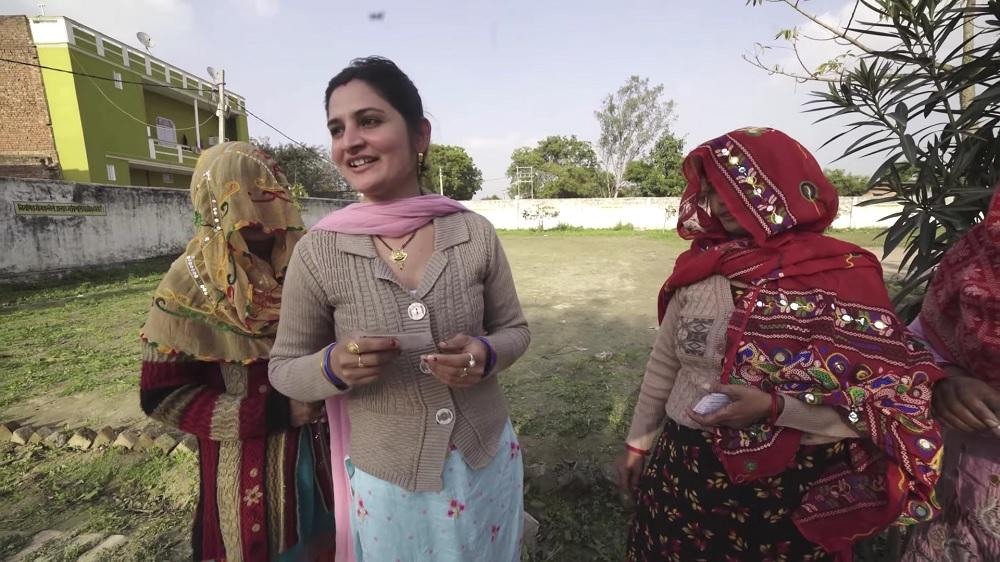
Still from Kairana Files (2022)
The Vikalp@Prithvi programme, organised by Vikalp: Films for Freedom Collective, has built a steady community of engaged film-citizens through a series of monthly screenings held at Mumbai’s Prithvi Theatre. Following the pandemic-induced lockdowns, they moved the curated programmes online. The films are primarily offered in the form of dialogic provocations—an invitation to engage in debate and broaden the terms by which regional politics across India get translated into national issues and discourses.
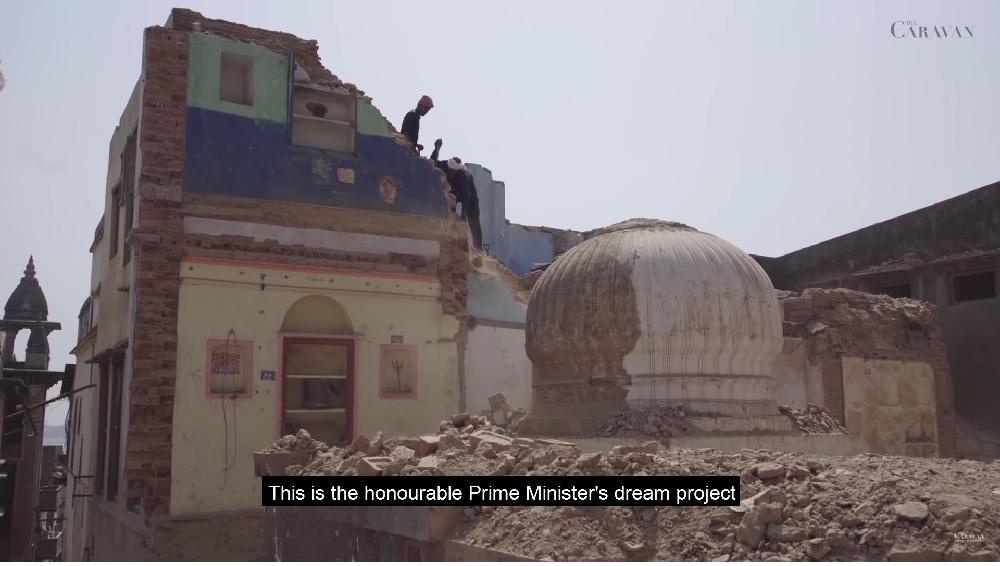
Still from Is Modi's Kashi Vishwanath Corridor laying the ground for another Babri? (2019). (Image courtesy of the Caravan.)
The focus for their screenings in mid-May 2022 was the increasing politics of polarisation in Uttar Pradesh over the last few years. The videos, made primarily by Rough Cut Productions, are hosted by independent outfits or media organisations such as the Caravan or the Wire. These could be defined as a form of journalism, as they often stake out the most basic territories of critique that other media houses rarely engage in. In Kairana Files (2022), we see how the material living conditions of locals in Kairana, in the Shamli district of Uttar Pradesh, are ignored by concealing them behind a larger conspiracy narrative—that of an ongoing effort to convert it into “another Kashmir”. The alleged exodus of members from the Hindu community is communalised and appropriated by the local unit of the Bharatiya Janata Party (BJP) to bring Kairana into a hyper-visible national focus. As a result, their rightful demands for civic improvement and employment opportunities are dispelled. The theme of highlighting the cultural project of Hindutva, which is deployed as an attractive screen to hide the socio-economic problems of Uttar Pradesh, returns repeatedly across the different films. Members of lower-caste communities, whose feet were washed and who were hailed as “karma yogis” (selfless workers) by Prime Minister Narendra Modi in 2019, reveal uncomfortably how they would rather have economic security than this grand gesture of social acceptance. What sticks out is the irony that their permission was not sought for this ritual footbath, nor were they told why it was going to be done to them.
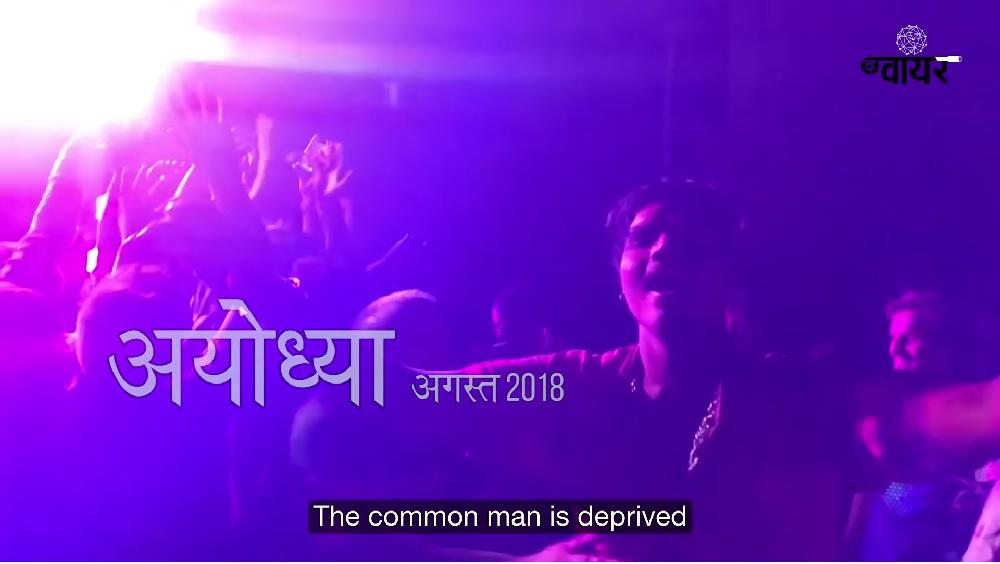
Still from In Ayodhya, Rave Parties for Hate-Mixes (2019). (Image courtesy of the Wire.)
Other films, like In Yogi’s UP, Godmen and Bureaucrats Collude, but Citizens are Forgotten (2019), present the cultural project of Hindutva through starker definitions of social power. The political machinery distinctly favours those espousing Brahminical patriarchy and chauvinism as it patronises godmen and politicians, who condescendingly refer to previous regimes as the rule of “Yadavs and Muslims.” The close connections that exist between members of the political-bureaucratic state and an assorted group of godmen and temple organisations should not come as a surprise either. Often, the films pick up on the difficulties faced by individual voices in getting their complaints heard or recognised by authorities, challenging the claim that the new state of law works equally for everyone in Uttar Pradesh.
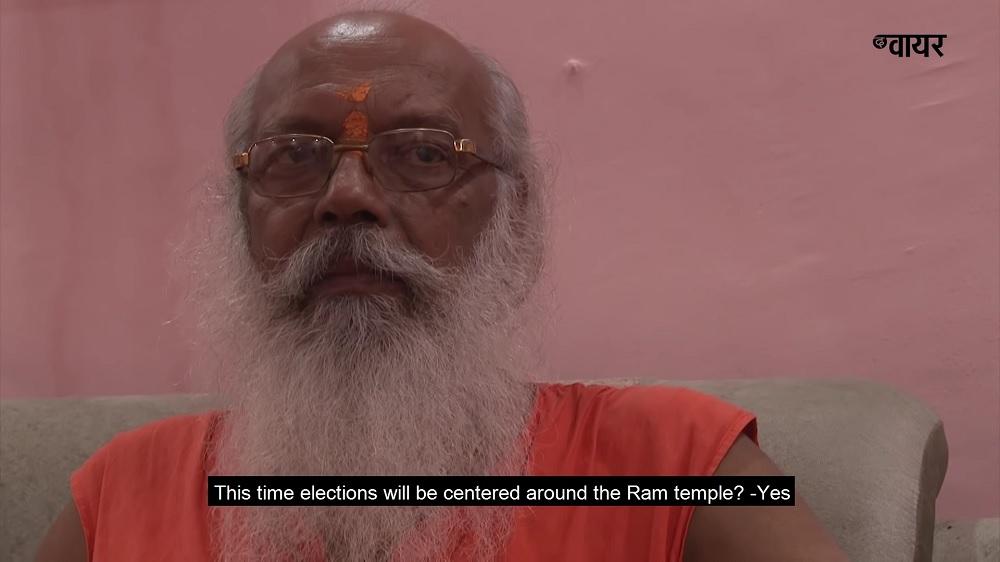
Still from In Yogi's UP, Godmen and Bureaucrats Collude, but Citizens are Forgotten (2019). (Image courtesy of the Wire.)
Is Narendra Modi’s Kashi Vishwanath Corridor laying the ground for another Babri? (2019) takes the viewer into the heart of the controversy surrounding the Kashi corridor in Varanasi. With its urban clearance projects encroaching steadily upon the sacred grounds of the Gyanvapi Mosque, the local communities are put on tenterhooks due to the potential tensions it might cause among the large numbers of Muslims living in that iconic city. The video provides crucial background for the events that unfolded, with the prescience of the title confirmed by the petition in the Varanasi District Court to conduct worship inside the mosque complex.
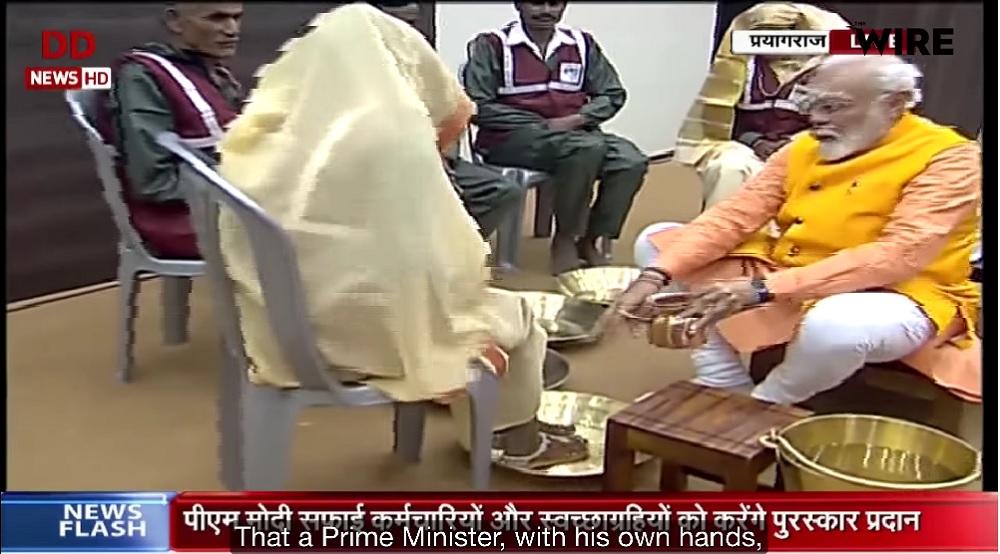
Still from 'Don't Wash Our Feet, Take Care of Our Stomachs' (2019). (Image courtesy of the Wire.)
The programme curated by Vikalp provides little more than an immediate critical presence on the ground that can be communicated with short videos. These, in turn, may be shared and passed forward to create alternative communities of resistance to the disinformation and hegemonic narratives being perpetrated by the national and regional governments of India and Uttar Pradesh. But at this dire moment in a largely quiescent media landscape, these provide the first proof of a different possible politics of community-building and establishing trust with state authority.
To read more about narratives of resistance against the growth of majoritarian Hindu nationalism, revisit Ankan Kazi’s essay on Kasturi Basu and Dwaipayan Banerjee’s A Bid for Bengal, Najrin Islam’s reflection on Ritesh Sharma’s Jhini Bini Chadariya and Ketaki Varma’s interview with Ishan Tankha about his practice.
All images courtesy of Rough Cut Productions.




